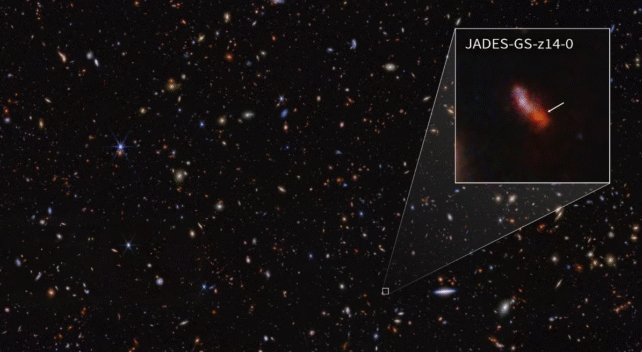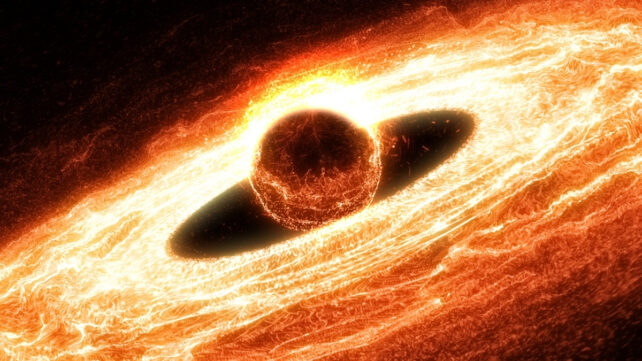JWST might have spotted the 'smoking gun' of a hypothetical object called a dark star in the distant Universe. If confirmed, this discovery could solve several mysteries of physics.
A dark star may sound like an oxymoron, but it would still emit light and energy. It wouldn't be powered by nuclear fusion like a garden-variety star, however – it would be running on a core of interacting dark matter particles.
"Supermassive dark stars are extremely bright, giant, yet puffy clouds made primarily out of hydrogen and helium, which are supported against gravitational collapse by the minute amounts of self-annihilating dark matter inside them," says Cosmin Ilie, an astrophysicist at Colgate University in the US.
Related: Dark Matter Search Could Lead Us to a New Kind of Star
Now, researchers have found the best evidence so far for the existence of dark stars. While studying four of the most distant objects ever observed, the team found that all are consistent with a dark star explanation.
Most intriguingly, though, one of the objects showed a particular light absorption feature at the wavelength of 1,640 Angstrom. This is considered a sure sign of dark stars, which arises from singly ionized helium in their atmospheres.
"While the signal-to-noise ratio of this feature is relatively low, it is the first time we found a potential smoking gun signature of a dark star. Which, in itself, is remarkable," says Ilie.

Soon after JWST fired up in 2021 and began peering farther back in space and time than humans ever had before, it caught some unexpected sights. Near the dawn of time sat what looked like huge galaxies at a moment when there shouldn't have been enough time (literally) for them to have grown so big.
Astrophysicists quickly came up with a possible explanation for some of these: Dark stars, which could contain as much as a million Suns-worth of mass, would look similar to galaxies from this distance.

The new study analyzes the spectra and morphology of four of these objects. One appears consistent with a point source, while the other three are slightly more diffuse, meaning they could be dark stars surrounded by nebulae of ionized hydrogen and helium.
On the other hand, the researchers admit that all four objects could still be interpreted as galaxies. But that raises its own questions. Dark stars, though hypothetical, may solve several mysteries.
Not only could they provide some hints on the nature of dark matter, but their eventual demise would theoretically see them collapse into black holes with a huge starting mass. Supermassive black holes have been discovered very early in the Universe's history, at masses that should be impossible based on existing theories for how they grow. Dark stars could give them a shortcut.
More observations are needed to confirm the identity of these distant giants, but they seem to rewrite what we know about physics no matter what they turn out to be.
The research was published in the journal PNAS.
